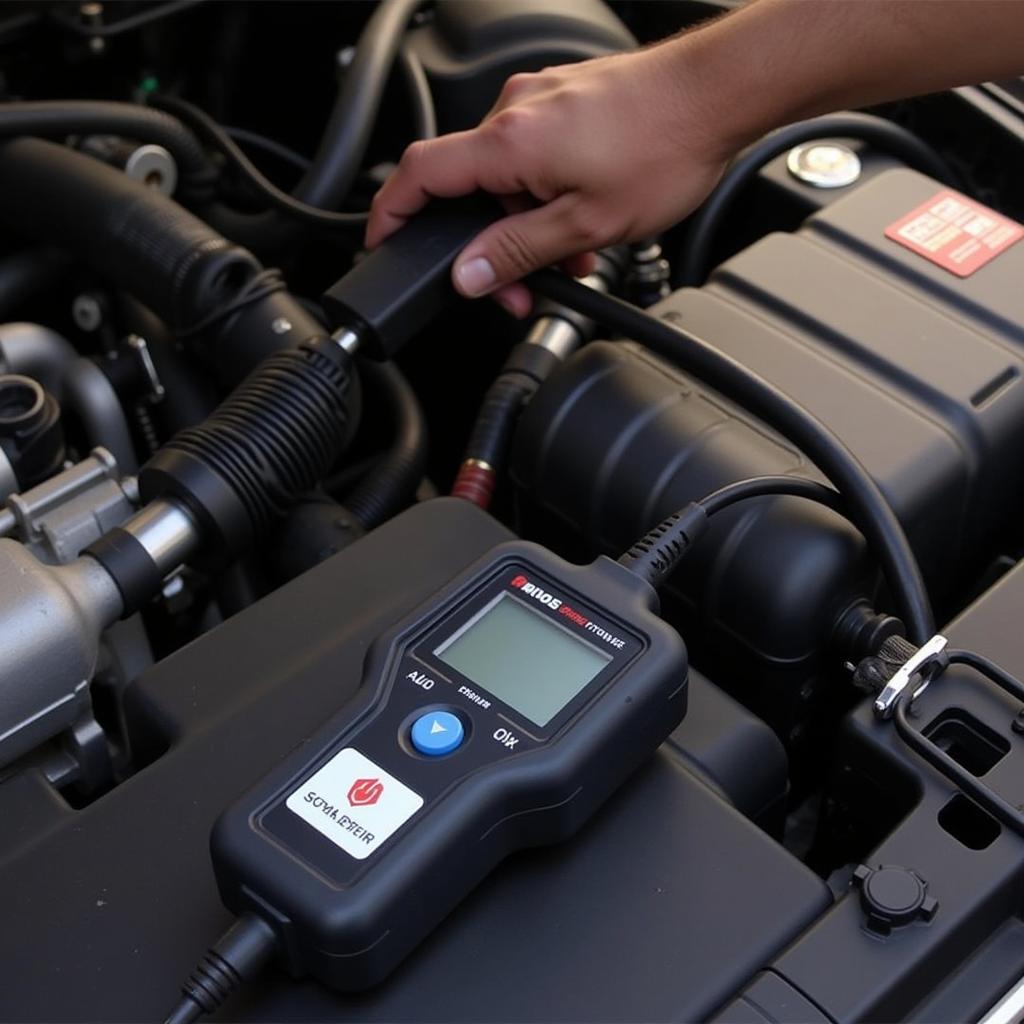If your 2010 Dodge Journey battery keeps dying, you’re not alone. This is a common issue and can be incredibly frustrating. This article will guide you through the potential causes and solutions, helping you get back on the road and avoid future battery drain.
A dead battery can be more than just an inconvenience; it can leave you stranded. Understanding why your 2010 Dodge Journey’s battery is constantly draining is the first step to a permanent fix. From faulty alternators to parasitic draws, we’ll cover everything you need to know.
Why is My 2010 Dodge Journey Battery Dying?
Several culprits can cause a dead battery in a 2010 Dodge Journey. Identifying the root cause is crucial for effective troubleshooting. These are some of the most common reasons:
- Faulty Alternator: The alternator recharges the battery while the engine is running. A malfunctioning alternator won’t charge properly, leading to a dead battery.
- Parasitic Draw: This occurs when an electrical component continues to draw power even when the car is off. This can drain the battery overnight or even within a few hours.
- Old Battery: Batteries have a limited lifespan. An old or worn-out battery may not hold a charge effectively.
- Corroded Terminals: Corrosion on the battery terminals can disrupt the flow of electricity, preventing the battery from charging properly and eventually leading to a dead battery.
- Extreme Temperatures: Both extreme heat and cold can affect battery performance. Cold weather can slow down the chemical reactions within the battery, while excessive heat can cause the battery fluid to evaporate.
- Leaving Lights On: Accidentally leaving interior or exterior lights on is a common cause of a dead battery.
Troubleshooting a Dead Battery in a 2010 Dodge Journey
Now that we’ve identified some potential causes, let’s look at how to troubleshoot the problem:
- Check the Alternator: Use a multimeter to test the alternator’s output voltage. testing for parasitic draw on car battery It should be around 14 volts with the engine running. If the voltage is significantly lower, the alternator may be faulty.
- Test for Parasitic Draw: Use a multimeter to measure the current draw with the car off and all accessories turned off. testing for parasitic draw on car battery A draw of more than 50 milliamps may indicate a parasitic draw.
- Inspect the Battery: Look for any signs of physical damage, cracks, or leaks. Also, check the battery terminals for corrosion.
- Check the Battery’s Age: Most car batteries last between 3 and 5 years. If your battery is older than that, it might be time for a replacement.
How to Prevent a Dead Battery
Preventing a dead battery is often easier than dealing with the consequences. Here are some preventative measures:
- Regular Battery Maintenance: Clean the battery terminals regularly with a baking soda and water solution.
- Turn Off All Accessories: Make sure all lights, radio, and other accessories are turned off when you park your car.
- Park in a Garage: If possible, park your car in a garage to protect it from extreme temperatures.
- Have Your Battery Tested Regularly: A professional mechanic can test your battery’s health and identify potential problems before they lead to a dead battery.
 Checking the alternator of a 2010 Dodge Journey
Checking the alternator of a 2010 Dodge Journey
“Regular battery maintenance is often overlooked,” says John Smith, a certified automotive technician. “A simple cleaning of the terminals can prevent corrosion and prolong the life of your battery.”
What if My 2010 Dodge Journey Battery Keeps Dying Even After Replacing the Battery?
If your 2010 Dodge Journey battery keeps dying even after replacing it, the problem likely lies elsewhere. The most common culprit in this scenario is a parasitic draw. It’s crucial to identify and address this issue promptly.
“A parasitic draw can be tricky to diagnose,” adds Sarah Jones, an electrical systems specialist. “However, with a systematic approach and the right tools, you can pinpoint the source of the drain and prevent further battery issues.”
Conclusion
A dying battery in your 2010 Dodge Journey can be a frustrating experience. However, by understanding the potential causes and implementing the troubleshooting steps outlined in this article, you can resolve the issue and prevent future occurrences. Remember, regular maintenance is key to a healthy and reliable battery. Don’t let a dead battery leave you stranded!
FAQ
- How long should a 2010 Dodge Journey battery last? Typically, a car battery lasts 3-5 years.
- What are the signs of a bad alternator? Dim headlights, flickering interior lights, and a whining noise from the engine compartment can indicate a failing alternator.
- Can a bad battery cause damage to other car components? Yes, a failing battery can strain the alternator and other electrical components.
- How much does it cost to replace a 2010 Dodge Journey battery? The cost varies, but you can expect to pay between $100 and $200 for a new battery.
- How can I test my car battery at home? You can use a multimeter to test the battery’s voltage.
- Is it safe to jump-start a 2010 Dodge Journey? Yes, but follow the proper procedure outlined in your owner’s manual.
- What should I do if my 2010 Dodge Journey battery keeps dying after replacing the alternator? Check for a parasitic draw.

